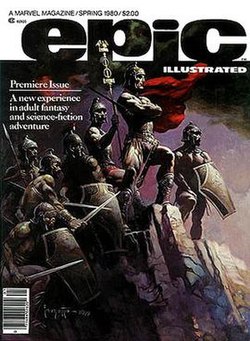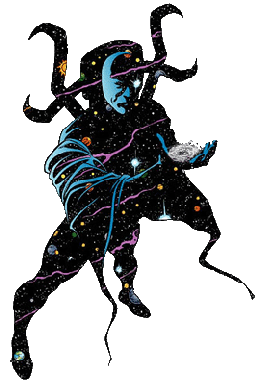
Eternity is a fictional cosmic entity appearing in American comic books published by Marvel Comics. Created by scripter-editor Stan Lee and artist-plotter Steve Ditko, the character is first mentioned in Strange Tales #134 and first appears in Strange Tales #138.
Strange Tales is a Marvel Comics anthology series. The title was revived in different forms on multiple occasions. Doctor Strange and Nick Fury, Agent of S.H.I.E.L.D. made their debuts in Strange Tales. It was a showcase for the science fiction/suspense stories of artists Jack Kirby and Steve Ditko, and for the groundbreaking work of writer-artist Jim Steranko. Two previous, unrelated magazines also bore that title.

Vampire Tales was an American black-and-white horror comics magazine published by Magazine Management, a corporate sibling of Marvel Comics. The series ran 11 issues and one annual publication from 1973 to 1975, and featuring vampires as both protagonists and antagonists.

Archie Goodwin was an American comic book writer, editor, and artist. He worked on a number of comic strips in addition to comic books, and is known for his Warren and Marvel Comics work. For Warren he was chief writer and editor of landmark horror anthology titles Creepy and Eerie between 1964 and 1967. At Marvel, he served as the company's editor-in-chief from 1976 to the end of 1977. In the 1980s, he edited the publisher's anthology magazine Epic Illustrated and its Epic Comics imprint. He is also known for his work on Star Wars in both comic books and newspaper strips. He is regularly cited as the "best-loved comic book editor, ever."

Marvel Fanfare was an anthology comic book series published by American company Marvel Comics. It was a showcase title featuring a variety of characters from the Marvel universe.

The Spectacular Spider-Man is a comic book and magazine series starring Spider-Man and published by Marvel Comics.
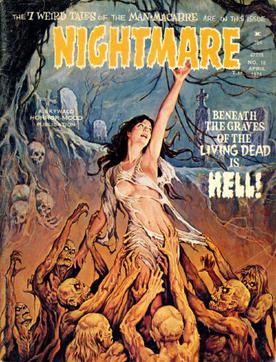
Skywald Publications was an American publisher of black-and-white comics magazines, primarily the horror anthologies Nightmare, Psycho, and Scream. It also published a small line of comic books and other genre magazines. Skywald's original comics were similar in appearance and quality to rival black-and-white publisher Warren Publishing, and even employed many of the same creators. Skywald operated from 1970 to 1975.
Michael G. Ploog is an American storyboard and comic book artist, and a visual designer for films.

Marada the She-Wolf is a sword and sorcery comic book fictional character created for Marvel Comics by writer Chris Claremont and English artist John Bolton.
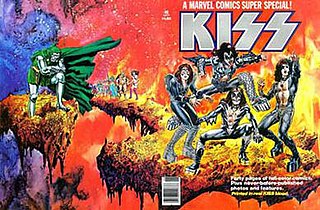
Marvel Comics Super Special was a 41-issue series of one-shot comic-magazines published by Marvel Comics from 1977 to 1986. They were cover-priced $1.50 to $2.50, while regular color comics were priced 30 cents to 60 cents, Beginning with issue #5, the series' title in its postal indicia was shortened to Marvel Super Special. Covers featured the title or a variation, including Marvel Super Special, Marvel Super Special Magazine, and Marvel Weirdworld Super Special in small type, accompanied by large logos of its respective features.

The Deadly Hands of Kung Fu was an American black-and-white martial arts comics magazine published by Magazine Management, a corporate sibling of Marvel Comics. A total of 33 issues were published from 1974 to 1977, plus one special edition. Additionally, a color Marvel comic titled simply Deadly Hands of Kung Fu was published as a 2014 miniseries.

Weirdworld was a fantasy series created by Doug Moench and Mike Ploog for American company Marvel Comics, set in a dimension of magic. A comic book series titled Weirdworld debuted in 2015 as a tie-in to the Secret Wars storyline, followed by a six-issue series as a part of the All-New, All-Different Marvel branding.
Roger McKenzie is an American comic book writer best known for his work on Daredevil with Frank Miller. McKenzie has also written for a variety of independent comics publishers, such as Pacific Comics, Comico Comics, Sirius Comics, Pied Piper Comics, and Eclipse Comics.
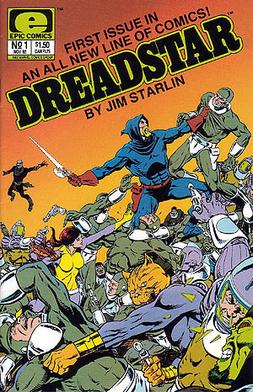
Dreadstar was the first comic-book series published by American publisher Epic Comics, an imprint of Marvel Comics, in 1982. It was centered on Vanth Dreadstar, sole survivor of the entire Milky Way galaxy, and an ensemble cast of crewmates, including cyborg sorcerer Syzygy Darklock, and their struggle to end an ancient war between two powerful, evil empires: The Church of The Instrumentality, run by the Lord Papal; and the Monarchy, administered by a puppet king.
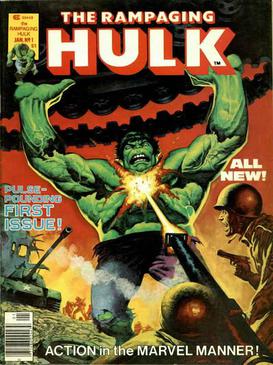
The Rampaging Hulk is a comic book series published by Marvel Comics. The first volume was a black and white magazine published by Curtis Magazines from 1977–1978. With issue #10, it changed its format to color and its title to The Hulk!, and ran another 17 issues before it was canceled in 1981. It was a rare attempt by Marvel to mix their superhero characters with the "mature readers" black-and-white magazine format.

Silver Surfer or The Silver Surfer is the name of several series of comic books published by Marvel Comics featuring the Silver Surfer.

The Incredible Hulk is an ongoing comic book series featuring the Marvel Comics superhero the Hulk and his alter ego Dr. Bruce Banner.
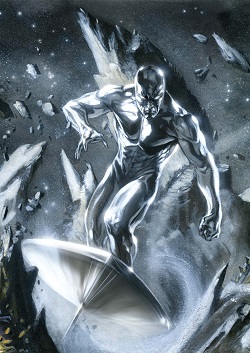
The Silver Surfer is a fictional character appearing in American comic books published by Marvel Comics. The character also appears in a number of movies, television, and video game adaptations. The character was created by Jack Kirby and first appeared in the comic book Fantastic Four #48, published in 1966.
Classic Star Wars is a series of various classic Star Wars comics reprinted by Dark Horse Comics between 1992 and 1996. It notably includes compilations of the weekly newspaper Star Wars comic strips written by Archie Goodwin and illustrated by Al Williamson; these were published as 20 single issues between 1992 and 1994 with new cover art by Williamson and others, and collected as three trade paperbacks between 1994 and 1996. While originally achromatic, these comics were colorized for the Dark Horse reprints.
